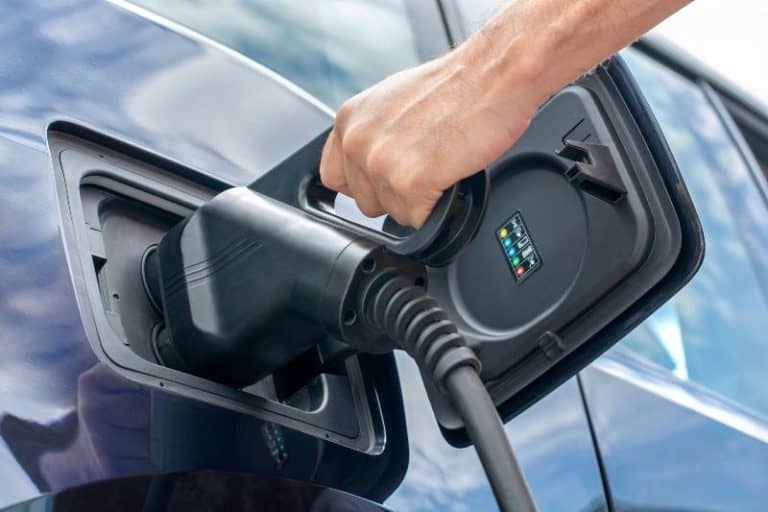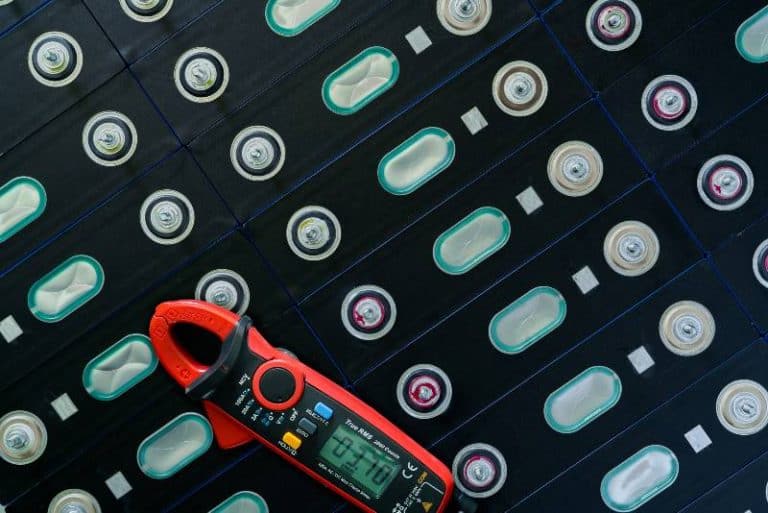Ready, Set, Charge: How to Transition to Electric Cars
Buying a new or used electric car is a big leap, though it isn’t as challenging as it once was. This is because automakers, new and old, are flooding the market with new electric vehicle (EV) options. Before long, there will be an electric car to suit the needs and budget of almost any driver.
Choosing the right EV is a bit different than how to switch from gasoline cars to electric cars to buying a traditional gasoline car or a gas-electric hybrid. You need to think more about range and charging than you do with a gas car, and you need to learn the language of electric vehicles. You’ll want to select a dealer who understands EVs and related incentives or choose a carmaker that skips dealers altogether and sells online.
In the following sections, we’ll take an in-depth look at the factors you should consider if you’re looking to convert your car to an EV and also how to buy a new electric car.
Although uncommon, a conventional vehicle also called a gasoline vehicle can operate electric vehicle conversions. In short, it can be converted into an all-electric vehicle, a plug-in hybrid electric vehicle (PHEV), or a hybrid electric vehicle (HEV).
Key Takeaways
- Buying an EV is a bit different from purchasing a traditional gas-powered car or hybrid.
- Think more about the range and charging than you do with a gas car when selecting your EV.
- Selecting the right dealer who understands EVs and related incentives is important, or choose a carmaker that sells online.
How to convert your car into an EV
Transitioning to an electric car calls for replacing all of the moving parts and the hoses and pipes necessary for a combustion engine with wires. To complete this unusual shift, you must remove the internal combustion engine, transmission, gas tank, and exhaust system altogether in order to substitute them with an electric motor, controller, and EV battery.
If you are not adept with electrical and mechanical work, this type of job can seem daunting. Fortunately for most people, there is a simple solution- either hire a professional to do the conversion for you or pick up an all-inclusive conversion kit that includes the necessary parts and instructions on how to install them.
To begin the conversion, you or a trained technician must remove many of the accessories associated with a gasoline engine, such as radiators, exhaust lines, and fuel lines. This is necessary in order to complete the alteration successfully. After these components have been stripped away from your vehicle’s engine system, then it’s ready for electric power.
Determine if your car is a good candidate for conversion: Not all cars are suitable for conversion. Typically, smaller and lighter cars work better because they require much less maintenance and energy to move.
Remove the engine and transmission: To begin the conversion, you or a trained technician must remove many of the accessories associated with a gasoline engine, such as radiators, exhaust lines, and fuel tanks. This is necessary in order to complete the alteration successfully.
Install the electric motor: To secure the electric motor to the transmission, you will need an adapter plate. Also, you may need to weld a metal frame in the engine compartment to hold the electric motor in place.
Install the battery pack: To give your electric motor the juice it needs to function, you’ll need a battery pack that’s installed in an easily accessible yet secure location. Additionally, the battery will have to be connected with wiring to its corresponding charger and other components for total power integration.
Install the controller: Acting as the commanding force of electricity, the controller is responsible for overseeing its navigation from the battery pack to your electric motor. With this capability, you can realize maximum efficiency by controlling speed and torque with ease.
Install the charging system: In order to charge your battery pack, you must use batteries in a charging system. This can include either the standard 120V wall outlet or an upgraded high-voltage charging station.
Connect all the components: After all the necessary elements are in place, it’s now imperative to interconnect them. To accomplish this task, you’ll have to link up the controller and engine as well as attach your charger to its battery pack. That’s just a start; there is still more work that needs to be done!
For optimal performance, switch out your hydraulic power steering system with an electric hydraulic pump after the conversion process. Additionally, install regenerative braking to harness the energy and feed it back into the battery for reuse.
Test and tune: After all the components are installed and connected, you’ll need to test everything to make sure it’s working properly. You may need to adjust the settings on the controller to optimize performance.
Thinking about swapping your gas-powered car for an electric vehicle instead? There’s no better way to go green and make a real impact on the environment. Check out our selection of EVs that are tailor-made for you and your lifestyle – read on below!
Considerations for Choosing an Electric Car
Range
When purchasing your first electric car, the range of miles it can go on a full charge is an important factor to consider. Are you mainly driving to work or do longer trips take place more often? Also, whether you live in a house or apartment matters as well.
Be sure to keep these questions in mind when selecting the best option for yourself and your needs! To make the most informed decision for your purposes, ask yourself these questions. For added ease, we’ve listed electric cars with their starting prices and highest range below.
Charging options
Moreover, the charging speed should be taken into account. Most models of electric vehicles come with a level 1 charger that is connected to a standard 120-volt connection, which can take between ten and more hours for your EV to charge completely. If you are looking for a quicker charging time, upgrading to a Level 2 charger is the way to go. However, this requires access to 240 volts of power in order for it to work properly. With Level 2 charging units, your electric car will be fully charged within 3-8 hours — ideal for those who need their vehicle back on the road as soon as possible!
If you’re a renter, that’s alright! There are still EV charging options available to you. Don’t forget to chat with your landlord – installing an EV charger is such a great investment and may be possible in your apartment building or complex. If you can’t rely on your own charging infrastructure, plentiful public options exist.
For instance, Tesla has produced its Supercharging network that provides motorists with unrestricted mobility. What’s more, federal funding is being used to launch a new nationwide EV charger system.
Size and space
Deciding on the optimal electric car for your lifestyle can be a daunting task, so here are some useful guidelines to assist you in making an informed choice: Taking into regard size and space needs is paramount when selecting the perfect electric vehicle.
Consider your daily needs: Consider how you’ll make use of your electric vehicle day-to-day. If it’s only for getting yourself to work and back, then a smaller model may do the trick; though if there are more people or cargo that needs transporting, you likely require an automobile with additional storage capacity.
Check the seating capacity: Ensure the electric car you select has enough seating for your family and any other travel companions. For families with younger children, look into vehicles that provide child-friendly features like rear-facing seats or a seamless latch system.
Look at the cargo space: When buying an electric car, don’t overlook the importance of storage space! If you often transport bulky goods like camping gear or furniture, it is wise to purchase a model with a substantial trunk or cargo area.
Think about parking and maneuverability: When selecting an electric car, it is essential to consider its size and if it will fit into your lifestyle. If you are often driving in the city, then a smaller vehicle would be more beneficial as parking in tight spaces and navigating traffic can prove difficult with larger vehicles.
Research the dimensions: To gain a better understanding of its size and space capacity, make sure to look into the measurements of the electric car you are considering. Check out dimensions such as height, width, and length in addition to interior specifications like headroom, legroom, and shoulder room.
By considering your everyday requirements, passenger room, loading capacity, parking space, and maneuverability in combination with measurements – you can easily find an electric car that is perfect for both your lifestyle and the activities of each day.
Performance
Performance is an important factor to consider when choosing an electric car. Here are some key things to look for when evaluating an electric car’s performance:
Acceleration: Electric cars stand out when it comes to their unparalleled acceleration and immediate torque. Discover an electric car that gives you the power you require, assessing how quickly it can go from 0-60 mph – some reaching this speed in mere moments while others take a little longer.
Range: When choosing your electric car, considering the range is pivotal. This refers to how far you can travel on a single charge and should be tailored with your driving needs in mind. If you drive long distances or have a lengthy commute, opting for an EV with greater range will be beneficial – giving you more freedom and peace of mind when out on the road.
Charging time: If you’re investing in an electric car, make sure to assess the charging time. Search for a vehicle that charges quickly and is harmonious with multiple stations – this will ensure the maximum performance of your new ride.
Handling and driving dynamics: To truly understand the driving and maneuvering capabilities of an electric car, it’s essential to take a test drive. Experience first-hand how your favorite model handles on the roads – be sure you make this step in your shopping process.
Efficiency: Electric cars are notorious for their efficiency, yet the level of this advantage can vary from make to model. To fully appreciate the car’s range and keep energy costs low, seek out an electric car with exceptional ratings on its energy efficiency.
Cost
When selecting an electric car, budget is a fundamental component to consider. Here are several essential points to bear in mind when assessing the cost of an electric vehicle:
Upfront cost: Electric cars may require a more significant initial investment than traditional gasoline-powered vehicles. When searching for your electric car, make sure it aligns with the budget you have in mind.
Tax incentives: To help with the costs of buying an electric car, your government may offer tax incentives. Consider exploring what kinds of discounts you could get in your area and take advantage of these savings opportunities.
Operating costs: Although electric cars may initially cost more than gasoline-powered vehicles, they often have lower operational costs. They necessitate less expensive repairs and servicing, while their electricity costs are usually cheaper than gas prices.
Charging costs: Weigh up the electricity expenses of powering your electric car. Depending on where you live, electricity rates may differ significantly and thus it is essential to look into how much it would cost to fill up your vehicle in your current location.
Resale value: With electric cars being a relatively new concept, it can be hard to ascertain their potential resale value. If you’re looking for an electric model that preserves its worth, investigate which vehicles have the best track record of holding market value.
Types of Electric Cars
Battery Electric Vehicles (BEVs)
Battery Electric Vehicles (commonly known as BEVs or EVs) is a revolutionary way of transportation- they can be powered solely from the electricity stored in their rechargeable battery packs, eliminating any gas emissions. Acknowledged for being 100% emission-free and therefore having no hazardous air pollution effects on our environment, these vehicles do not add to our global warming or carbon emissions footprint as traditional gasoline-powered cars do; instead providing an eco-friendly alternative that is becoming increasingly popular.
Plug-In Hybrid Electric Vehicles (PHEVs)
PHEVs are a breakthrough in automotive technology. A combination of engine and electric motor power these vehicles, plus the added bonus of regenerative braking for battery recharging. What sets them apart from traditional hybrids is their larger onboard batteries that can be easily charged via an outlet connected to the grid.
If you’re looking for a more sustainable option, then consider purchasing one of the many available PHEVs. At slow speeds, they can travel up to 40 miles on their electric charge before needing assistance from the gas engine – ranging anywhere from 10-40 miles depending on your model. Once the all-electric range is used up, these vehicles will act as regular hybrids and offer several hundred additional miles with just a gas tank! Although most PHEVs are not compatible with fast charging options, they can still be charged at an EVgo L2 charger in no time.
Hybrid Electric Vehicles (HEVs)
Hybrid Electric Vehicles (HEVs) boast a combination of both electric- and gas-powered propulsion, where the battery receives energy from regenerative braking. Unlike in traditional internal combustion or gasoline engine vehicles, this often otherwise squandered braking energy is recaptured to augment gasoline engines during acceleration – providing extra power for accelerating without additional fuel use. Note that regular hybrids can neither be plugged into the grid nor charged with EVgo.
Fuel Cell Electric Vehicles (FCEVs)
Boasting a far greater efficiency than traditional internal combustion engine vehicles, lower emissions, and absolutely zero tailpipe emissions, Fuel Cell Electric Vehicles (FCEVs) are revolutionizing the auto industry. Powered by hydrogen and still in their nascent stages of implementation, FCEVs only emit water vapor and warm air to make our world an ecologically cleaner place.
Pro tip: Read here to learn more about Hybrid, plug-in, vs Electric Vehicles, and the differences between them.
Assessing Your Lifestyle
Daily commute
Let’s be real – our daily commute can be a major factor when considering an electric vehicle. It’s important to take a step back and assess how far we’re driving each day for work or school. Are we running errands on the weekends that add to that mileage? Once you have a good idea of your daily driving needs, it’s time to match it up with the range of electric cars you’re interested in. Can that particular EV meet your daily driving requirements without needing to charge up multiple times a day? These are the important questions to ask yourself before making the switch to an electric vehicle. Trust us, a little bit of prep work can go a long way!
With Tesla Model 3, you get all the amazing benefits like Autopilot driver assistance and Sentry/Dog modes but without having to pay a luxurious vehicle price (starting at US$45,000). The interior boasts the renowned big-screen display which works as your GPS among many other features. Plus with up to 358 miles of range on one charge – you won’t need to plug in for quite a long time!
Weekend trips
Are you an adventure seeker who loves taking weekend trips? If so, you may want to assess your lifestyle to see if an electric vehicle (EV) is right for you. The Tesla Model S Long Range is an excellent choice for travelers looking to cover more ground. With a range of over 400 miles, you can go further without worrying about running out of juice. Plus, the Tesla Supercharger network ensures you can recharge quickly on the go in all fifty states! And with a more affordable price tag than its competitors, the Tesla Model S Long Range is a great option to consider for your next road trip.
Family needs
If you are searching for a family-friendly electric vehicle, the Tesla Model Y is your perfect match. Featuring three rows of seating and accommodating up to seven passengers, this automobile offers all that you need for comfortable travel with both little ones and grownups alike. Even better, your kids will have plenty of room to stretch out and get comfortable, meaning no more complaints of feeling suffocated in the back seat. Investing in the Tesla Model Y not only benefits the environment, but it’ll makes family road trips more enjoyable for everyone involved.
Climate and terrain
The Rivian R1T was designed for the zombie apocalypse, and it definitely deserves a spot on any list of the top EV off-roaders. Not only is this vehicle equipped with everything you need to explore even the most remote corners of nature—but it’s also outfitted with what may be one of the best all-wheel drive systems ever created in automotive history! When it comes to off-road capability, there’s no denying that Rivian would make an impressive addition to lists ranking vehicles from around the world—EV or not.
With its quad-motor AWD system, the off-road vehicle of your wildest dreams is equipped with individual motors for each wheel. This ensures that torque can be accurately divided and delivered where necessary – opening up a world of possibilities on any terrain!
Off-road adventures can be difficult, especially when dealing with wheel slips. Fortunately, the Rivian’s powertrain system is there to ensure that your journey runs smoothly and efficiently; by actively reallocating its power from slipping wheels to those in need of assistance. This gives drivers peace of mind knowing they’re equipped for even the toughest terrains!
Top Electric Cars for Different Lifestyles
City dwellers
Living in the city, it’s important to have a car that can maneuver through tight streets and fit into small parking spaces. That’s where electric cars come in handy, and there are a couple of great options for city dwellers. The Mini Cooper is already a favorite for its compact size and style, but did you know it also comes in an electric version?
For just under $30k, you can zip around town emitting zero emissions with a range of 114 miles. And let’s be honest, there’s nothing cuter than a small electric car. Another attractive option here is the BMW i3, which has recently stopped production in the U.S. as it’s being reconfigured as an electric sedan. But if you can still get your hands on one, it’s worth considering for its efficient size and cool design.
Road trippers
Tesla’s most important model, the Model 3, has been lauded for its well-rounded features and affordability. Regardless of your budget, it is undeniably a great choice if you wish to set out on an extended journey. At each trim level, the Model 3 stands apart as a go-to option for road trips.
The Model 3 Performance is the best-value fast car currently on the market, making it an excellent investment. Furthermore, I would argue that it remains the most well-rounded electric vehicle (EV) option available to consumers today.
Families
Two decades ago, it was inconceivable to see two South Korean auto companies leading the pack – Hyundai and Kia. Yet not only did they create a wealth of great mainstream vehicles, but were also at the forefront of developing electric variations of their cars.
Hyundai’s Ioniq 5 is the beginning of the company taking EVs seriously. Outfitted with a custom EV platform and 800V electrical architecture, it allows for incredibly rapid charging; only rivaled by Porsche Taycan, Audi E-Tron GT, and Kia models. Quite impressive!
Not only is the Ioniq 5 impressive in its technical capabilities, but it also draws attention with its unique amalgamation of retro-futuristic styling and high-quality modern interior components.
Despite its size and weight, the Hyundai was a surprisingly enjoyable ride with excellent performance, good traction control, and just enough adjustability to make it exciting. It’s also an incredibly comfortable vehicle for cruising around town – well soundproofed; with a smooth drive quality and luxurious vibes that perfectly befit electric cars. The back seats have generous space for passengers plus there’s plenty of storage in the boot too.
Performance enthusiasts
Mini Cooper SE
The Mini Cooper SE is equipped with greater power and a lower-slung driving posture than the Abarth 500e, so it’s not just about creating false exhaust sounds for pedestrians but rather taking you around corners at a faster speed.
The Mini Cooper’s electric steering rack is one of the best available, regardless of price. When you lift off the mid-corner in this vehicle, it will respond quickly and turn with ease—just like a high-performance hatchback would!
The Mini does not have the same custom-engineered electric vehicle platform that its cousin, the 500e possesses. One of the drawbacks this presents is its relatively diminished battery size which only grants a WLTP range of up to 145 miles. Given this possibility, it might be impractical for you to take your beloved car on those lengthy drives and partake in some enjoyable cruising instead.
Eco-conscious buyers
The Toyota Prius Prime continues to be one of the bestselling hybrids on the market, and for 2022 it is even more eco-friendly than before. With a light lithium battery aiding its impressive mileage capabilities, this green car can drive up to 640 miles without needing refueling – making it ideal for both regular commuters as well as those setting off on an epic road trip!
How To Choose The Right Electric Car For Your Lifestyle FAQs
What charging options are available for electric cars?
TRICKLE CHARGE
For those desperate situations at home, switching to a standard three-prong 220V plug can charge an EV. However, this is the slowest method and any switching should be done with caution and only after consulting your electricity provider.
AC CHARGE
Installing a wall box can make charging your vehicle up to 3-4 times faster when using AC Household Charging. What’s more, AC Public Charging is also an option for you to use!
DC CHARGE
Want to charge your EV batteries in the blink of an eye? Check out public DC Fast charging stations with power outputting from 50kW and beyond. This method can get you a full battery – 20% to 80% – in around forty minutes! For even faster results, some ultra-fast charger stations provide more than 150kW for super speedy recharging.
How does the size of an electric car affect its suitability for different lifestyles?
The size of an electric car has a huge impact on its suitability for different lifestyles. Generally, larger cars provide more space but will require more energy to power which could reduce the range of your vehicle. Smaller cars are usually more economical and provide better range due to their reduced weight and power requirements.
What is the cost of owning an electric car compared to a traditional car?
Driving an electric car instead of a gasoline car can save you money in the long run; estimates show that it tends to cost about half as much to operate an EV. This indicates that plug-in EVs are a wise financial choice, allowing you to keep more money in your pocket while still enjoying the benefits and convenience of driving.
Can electric cars perform as well as gasoline vehicles?
Electric cars are capable of providing top-notch performance that is comparable to or even higher than what you find in petrol vehicles. Imagine the excitement when you can experience lightning-fast acceleration and high speeds thanks to their instantaneous torque! Plus, there’s efficient regenerative braking technology for slowing down when needed – no need for costly gas stations for refills, oil changes like with gas-powered cars as well as spark plug replacements, saving you time and money on maintenance costs.
What factors should I consider when assessing my lifestyle for an electric car?
Choosing an electric car that matches your lifestyle and addresses all of your requirements can be simple when you take into account certain factors. From the simpler aspects like climate, terrain, and daily commutes weekend trips, and family needs – to more complex considerations such as size & space, performance levels, and cost; there is a wide range of variables for you to assess in order for you find the perfect electric vehicle!
How much do electric vehicle conversion kits cost?
The total cost of EV conversion kits varies, but generally, you can expect to pay a minimum of $8,000 not including the battery, which is another $1,000 to $3,000.
Are electric vehicle conversions legal?
As confirmed by the U.S. Department of Energy, after-market EVs are permissible as long as they meet rigorous safety and emission requirements mandated by federal agencies such as the National Highway Traffic Safety Administration and Environmental Protection Agency, alongside state departments like California Air Resources Board.
Which Cars Can Be Converted?
What type of car is the best candidate for an electric conversion? A light car (around 2,000 to 3,000 pounds curb weight) with a manual transmission is ideal. Heavier vehicles can restrict the range of the electric engine, and automatic transmissions use up too much power because they require the engine to be constantly idling.
Conclusion
Choosing and converting an EV for your lifestyle can be tricky, with so many features and benefits to consider. After reading this article, you should know some ideas about how to convert gasoline cars to EVs as well as the basics of which types of electric cars are best suited for different lifestyles. With the power efficiency, quiet motoring, and environmental sustainability that come with electrically powered vehicles, there is no doubt that an electric car is the way of the future. If you’re interested in taking that first step towards zero-emissions transportation, take a look at what is available on the market today.
Even better yet – sign up for our newsletter to keep up-to-date on the latest in Electric Vehicle tech and trends. That way you can decide confidently when it comes time to choose your ideal electric car!






